What's the correct light height over a dining table? Designers reveal their rules of thumb
How high above a dining room table should a light be? Here, design experts offer their top tips for getting your dining lighting right


Getting the right light height over a dining table can be tricky to work out by eye alone, plus there is no real hard and fast rule. In fact, the height of your light above your dining room table depends on many variables. What the purpose of your dining room table is, what kind of light fixture is it, the lighting and natural lighting of the room - these are all factors to take into account when planning your lighting for this space.
'Light impacts visual and spatial perception - even our moods,' says architect Denise Hall, who specializes in lighting. Aesthetically too, lighting has the power to frame the space and provides a comfortable and hospitable light for dining and socializing.
Read on for our rules of thumb for dining room ideas, lighting solutions, and how to get the right height for your light over a dining table
Oonagh is a homes writer and editor for Livingetc and has developed an expansive contacts list of lighting designers and furniture makers from the interiors world, who know the importance of lighting in the home. For this article, Oonagh spoke to those in the know to compile ideas to help her readers plan their dining room lighting.
What's the correct light height over a dining table?
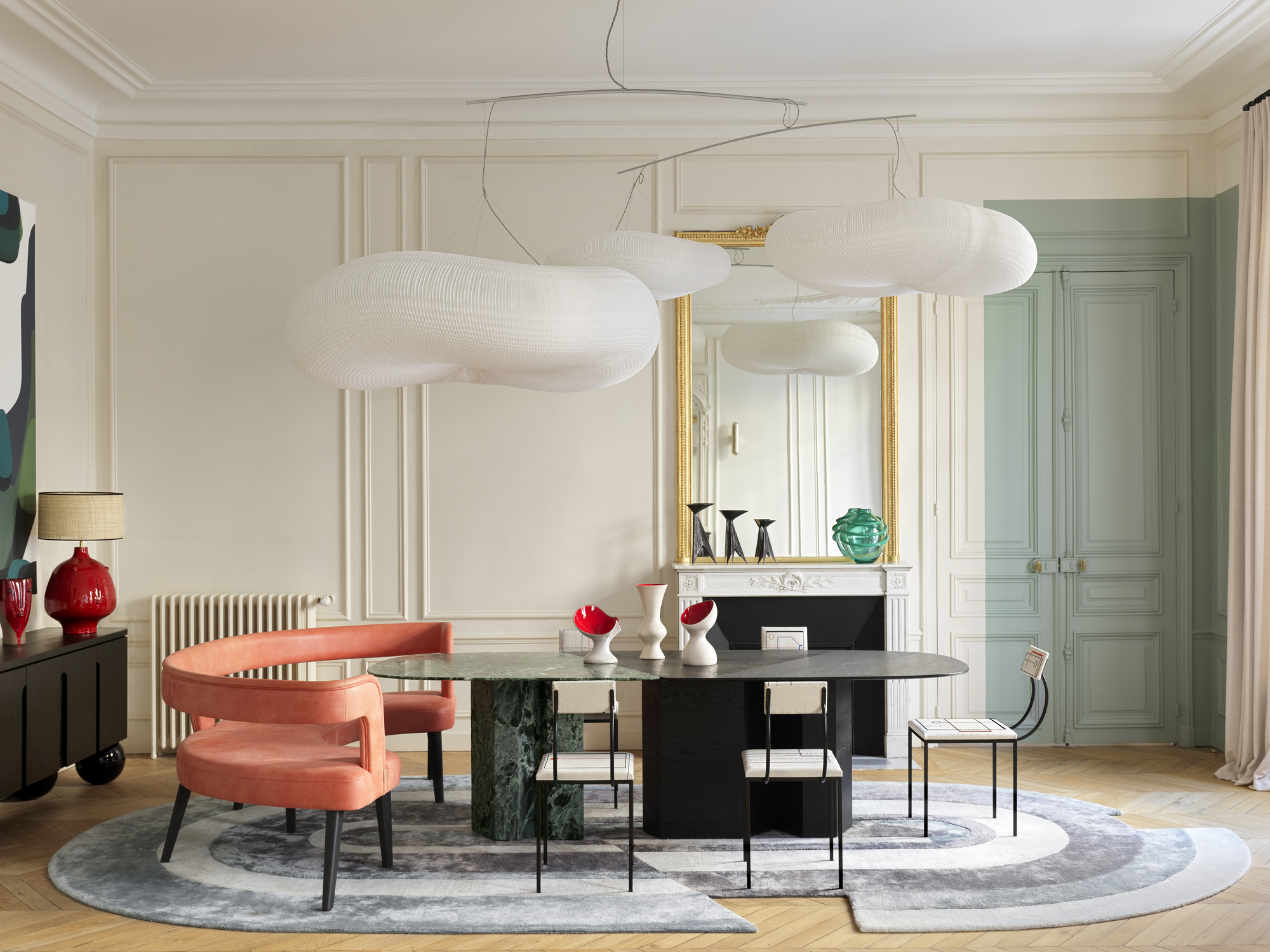
When it comes to dining room lighting ideas, how high above a dining room table your light should be depends on myriad factors, like the size of your dining room, ceiling height, light projection, the size of the table and the size of the light. But by following a rule of thumb as a guide, and by using your best judgement, you can't go too far wrong.
'The general rule to follow is to ensure the bottom of the light fixture is between 30" and 36" from the top of your table,' says Marketa Rypacek, managing director at lighting brand, Industville Ltd. 'This standard recommendation is based on average size room, so keep those other factors in mind when plotting for this height.'
'More specifically, I like the bottom of a fixture to hit approximately 34” above the surface of the dining table,' says interior designer, Mead Quin. 'It is important that it hangs close enough to create intimacy between and around the dining experience.
'It it's too high, it feels disconnected and separate. Too low, it feels crowded. Every fixture, dining table and desired outcome is different but 34” is a good rule of thumb for dining table lighting height for me.'
'I feel that hanging a dining room chandelier 36”-42” above the table is a great spot,' says Kristen Pena of K Interiors. 'It’s intimate enough to create ambiance in the space but if you end up standing in the space talking to someone it still clears the line of vision for most people. Of course, ceiling height matters as well, if ceiling is really high go with the higher height.'
Whatever distance between the table and the light you settle on, consider the base function of a dining room light. 'Remember an overhead light is ultimately required to illuminate a table, so position high enough that it will not distract when sitting, but low enough that it creates an intimate atmosphere,' say Jen and Mar, co-founders of Interior Fox.
Pendant lights
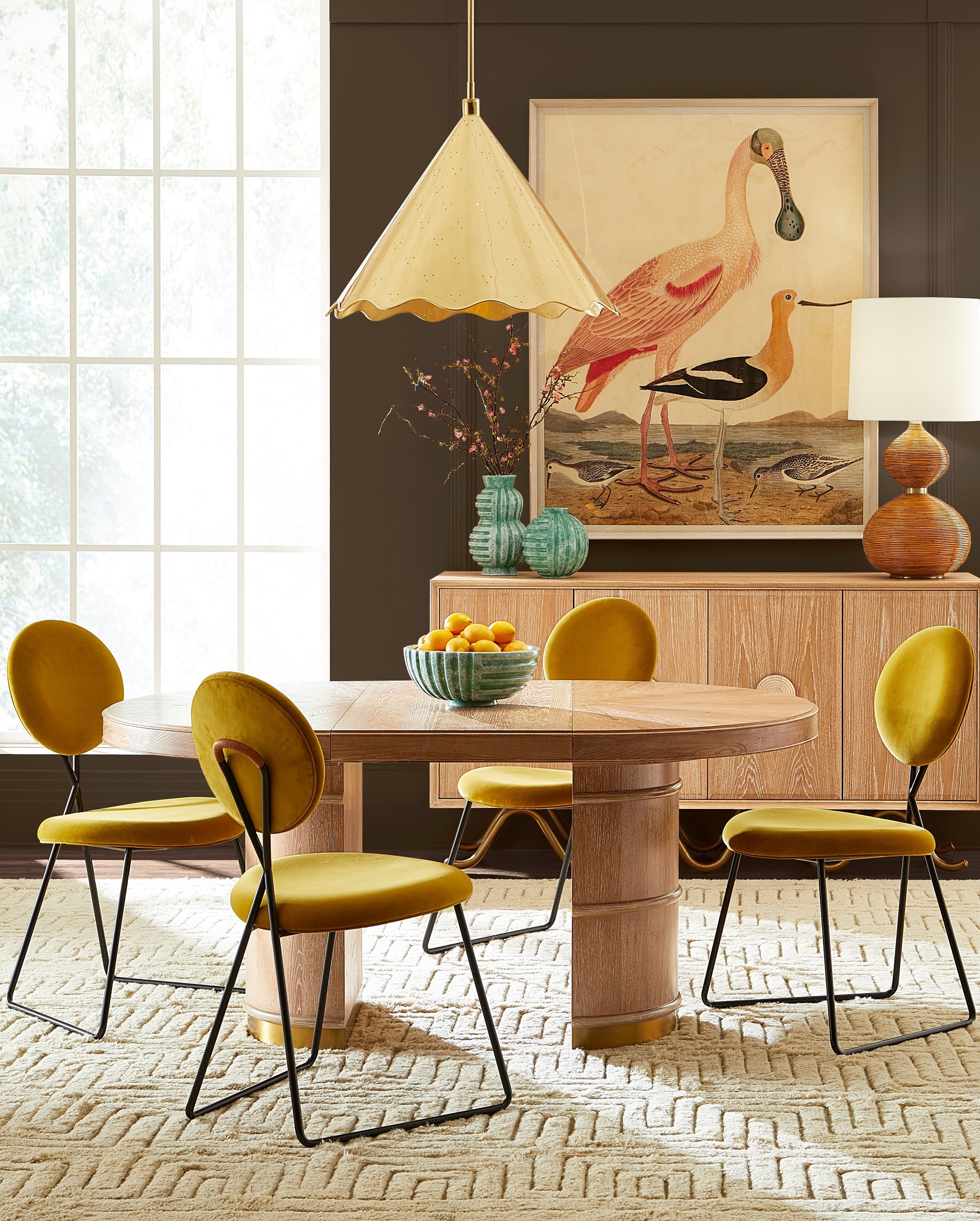
Pendant lighting is a beautiful way to light your table and is typically a singular light fixture that hangs from the ceiling by a rod or cord. When measuring your cord, bear in mind the 30" to 36" dimensions, but remember that there are other considerations when it comes to cord lighting.
A pendant's simplicity means you can opt for a grouping of lights, rather than just one. If you have a long, rectangular-shaped table, two or three, equally spaced out, can really create a dining area fit for a feast. 'For best results and to add interest, hang the pendants at varying heights and choose shades of varying sizes and styles to create a standout look,' says Marketa Rypacek at Industville.
Rise and fall pendants are a good solution if you can't settle on a decision for how high to hang your pendant. It opens your dining room up and becomes a more flexible space. Drop down the pendant closer to the table when you are looking to create a more intimate mood or setting, and pull the cord to bring the light closer to the ceiling, pushing out more light and giving more space around the table - great for busy dinner parties and avoiding bumping heads.
In terms of what is trending in the world of pendant lights, look out for playful, colorful designs that add joy and personality to a space. 'Our Scallop pendant Lights with their wavy edge and clashing colors are highly popular, along with bright, bold and high gloss designs that sit beautifully with gingham or check shades,' says Hollie Moreland, creative director at David Hunt Lighting.
Chandelier lights
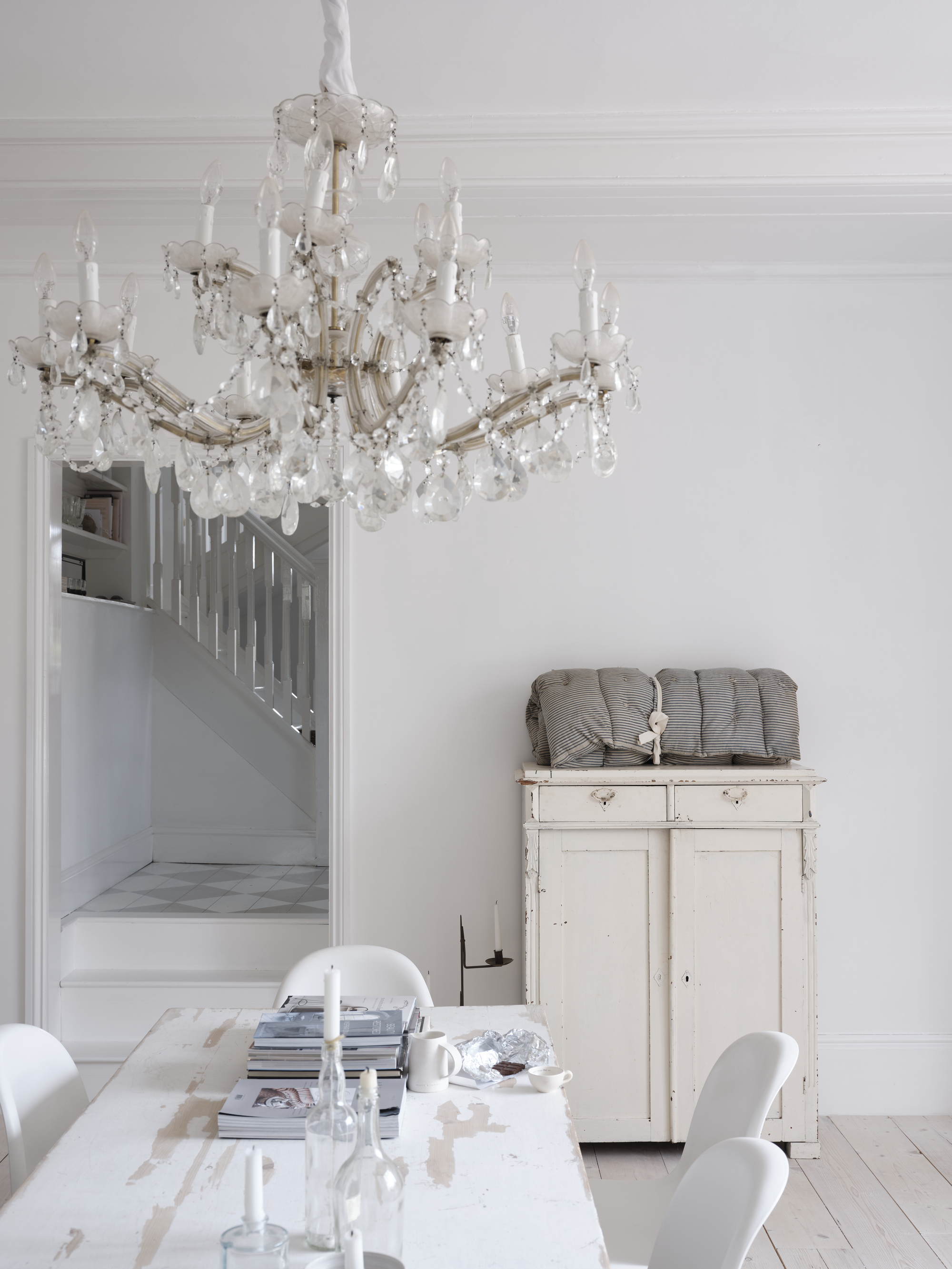
If you're going for a more statement light than the simple pendant, a chandelier makes a beautiful centrepiece above your dining room table, but has different considerations aside from the 30" to 36" guidelines.
Remember that chandelier is about width as well, and achieves a more dramatic look by taking up the space either side of the lightbulb. You need to adjust your design and chandelier choice to the appropriate table size and get the proportions right, however. 'It's important to maintain the right proportions between the dining room table and the chandelier. We suggest that the light fixture ranges from half to two-thirds the width of the table,' says Alejandro Campos and Joel Rojas, co-founders of Mexican lighting studio, Bandido. If your chandelier is large for your dining table according to this rule, consider taking it higher.
Staying within this range helps keep the table and the lighting in proportion, creating aesthetic harmony with a chandelier acting as a beautiful centrepiece.
Consider what type of dining room you have
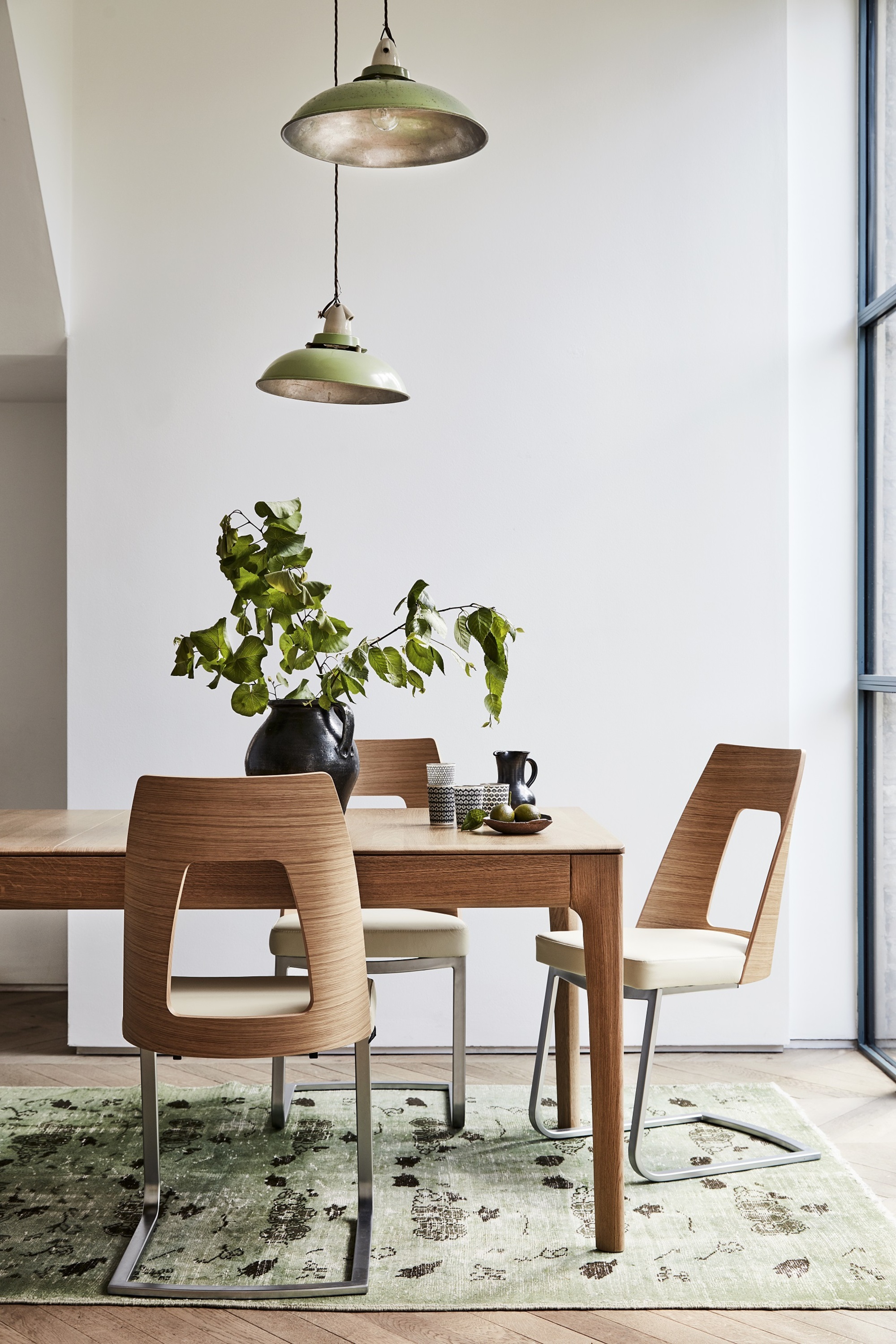
When planning which kind of light fixture to go for, it's important to think about the dining table you have, the type of room it is situated in, and what kind of atmosphere you want to create.
Long tables in a small room might require a few lighting fixtures dotted next to each other, equally spaced with equal spacing between the bottom of the pendant to the table, while a large circular table could look great with one chandelier or large single pendant in the centre.
Think about the natural light in your room too, and how high your ceiling is. 'Consider oversized shaded lighting for lower ceiling height rooms as you can achieve dramatic design impact with the shades without a large overall height,' advises Hollie Moreland, creative director at David Hunt Lighting. 'Go big on width or place multiple lights in a group to achieve a statement design without high ceiling heights.'
What level of light output is right for a dining room?
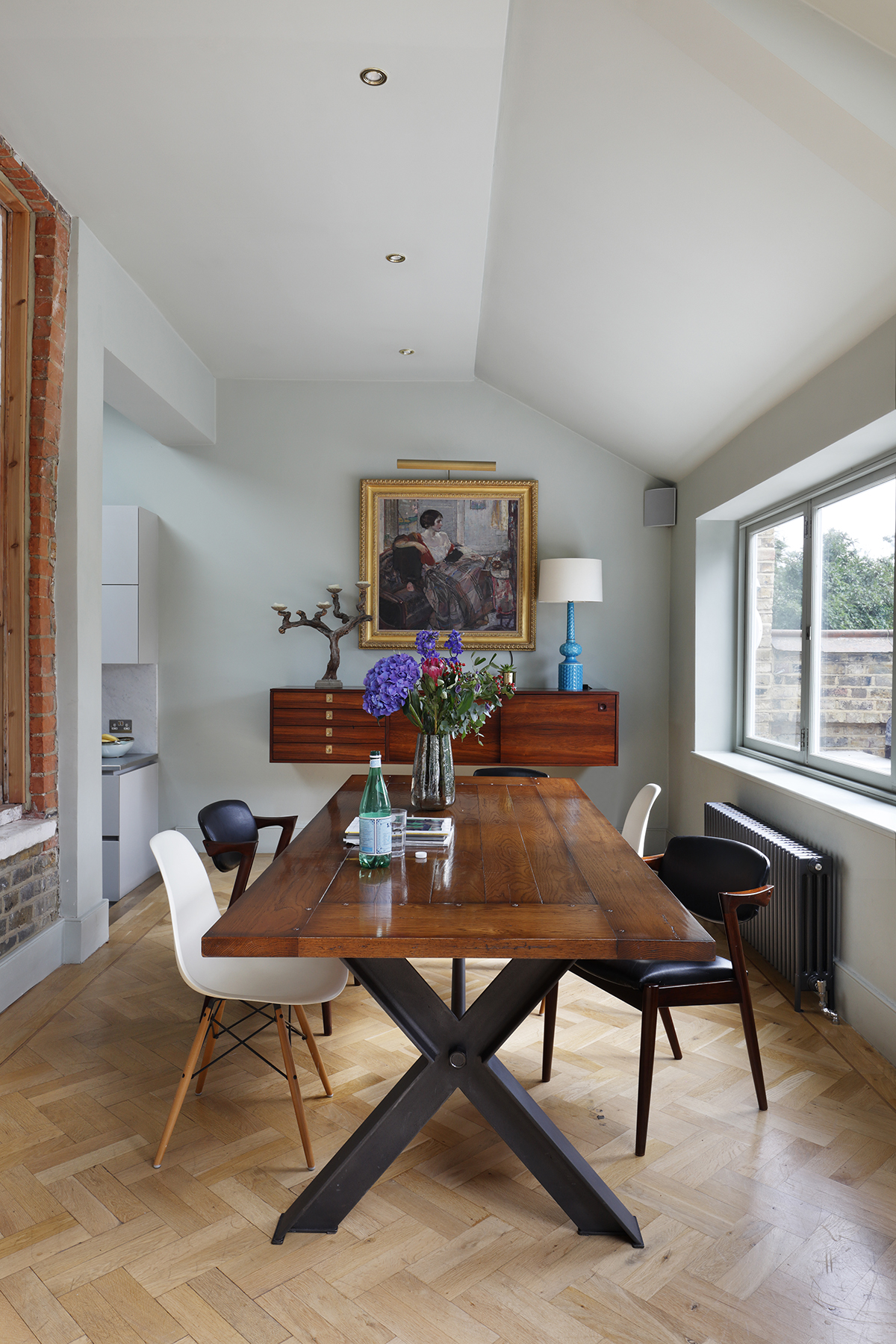
Height between the table and the light fixture can also impact how much light is actually given out into the room. 'The level of light output can also be used to create impact and make a statement,' says Hollie. 'Your desired light output can impact the choice of fitting you go for and the number of bulbs you want.'
A warm, white light - between 2600k and 3000k is a standard color for an incandescent bulb and gives of a warmish glow that isn't too hostile and stark for the space, similar to the soothing glow of candlelight.
Marketa also suggests layering lighting, so it's not fully up to your statement light fixture to do all the work. 'To create a successful dining room lighting scheme, try approaching your lighting in a layered manner,' she says. 'This will create little pockets and pools of light to give a calming atmosphere by using a blend of ambient, task and accent lighting. To achieve this, embrace the full range of lighting sources available from pendants and wall lights to recessed and track lighting, which will allow you to create a space that is both practical and atmospheric. '
Dimmer switches are a quick and cost-effective way of offering multiple lighting levels in a space, allowing the homeowner to set the tone and change the atmosphere of a room instantly. 'A dimmer switch is the number one consideration,' says Marketa. 'For instance, you may prefer a low, dim light for entertaining guests at a dinner party, but still require the option of full brightness for other day to day activities that may occur in the room such as breakfast, working or reading.' With dimmer lights as spotlights, you don't have to worry about the height between the table as that are embedded into the ceiling.
Be The First To Know
The Livingetc newsletters are your inside source for what’s shaping interiors now - and what’s next. Discover trend forecasts, smart style ideas, and curated shopping inspiration that brings design to life. Subscribe today and stay ahead of the curve.

Former content editor at Livingetc.com, Oonagh is an expert at spotting the interior trends that are making waves in the design world. She has written a mix of everything from home tours to news, long-form features to design idea pieces, as well as having frequently been featured in the monthly print magazine. She is the go-to for design advice in the home. Previously, she worked on a London property title, producing long-read interiors features, style pages and conducting interviews with a range of famous faces from the UK interiors scene, from Kit Kemp to Robert Kime. In doing so, she has developed a keen interest in London's historical architecture and the city's distinct tastemakers paving the way in the world of interiors.
-
 Straight from Salone: Five Emerging Trends I Found That'll Shape Interiors For the Year Ahead
Straight from Salone: Five Emerging Trends I Found That'll Shape Interiors For the Year AheadFrom reflective silver to fluidity, here's my perspective on the key themes and new moods coming through from Milan Design Week
By Sarah Spiteri Published
-
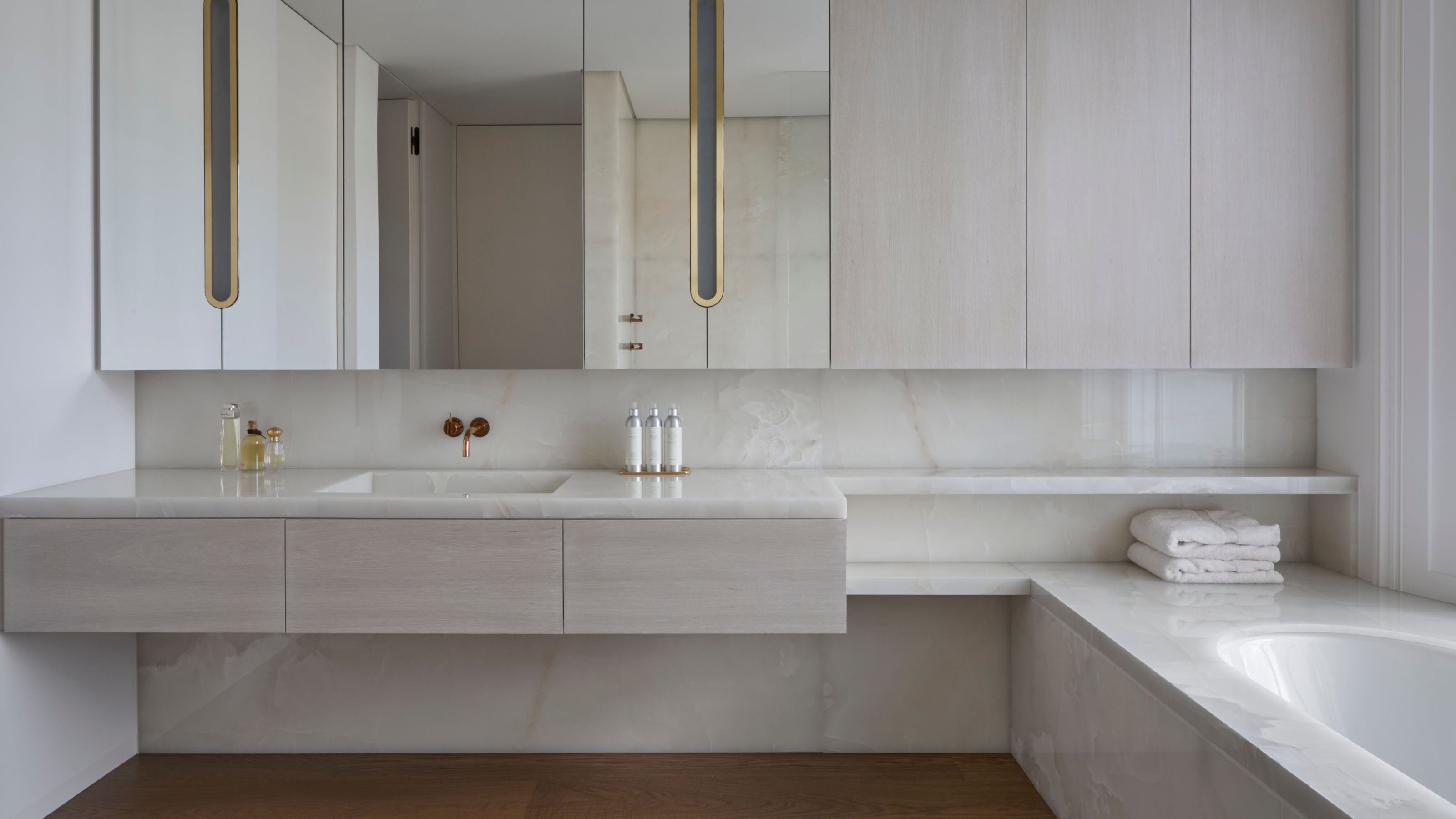 9 Bathroom Storage Mistakes You're Probably Making That Make Using This Space Much Harder — And What to Do Instead
9 Bathroom Storage Mistakes You're Probably Making That Make Using This Space Much Harder — And What to Do InsteadDiscover which mistakes are to blame for your overcrowded and cluttered bathroom
By Seraphina Kyprios Published